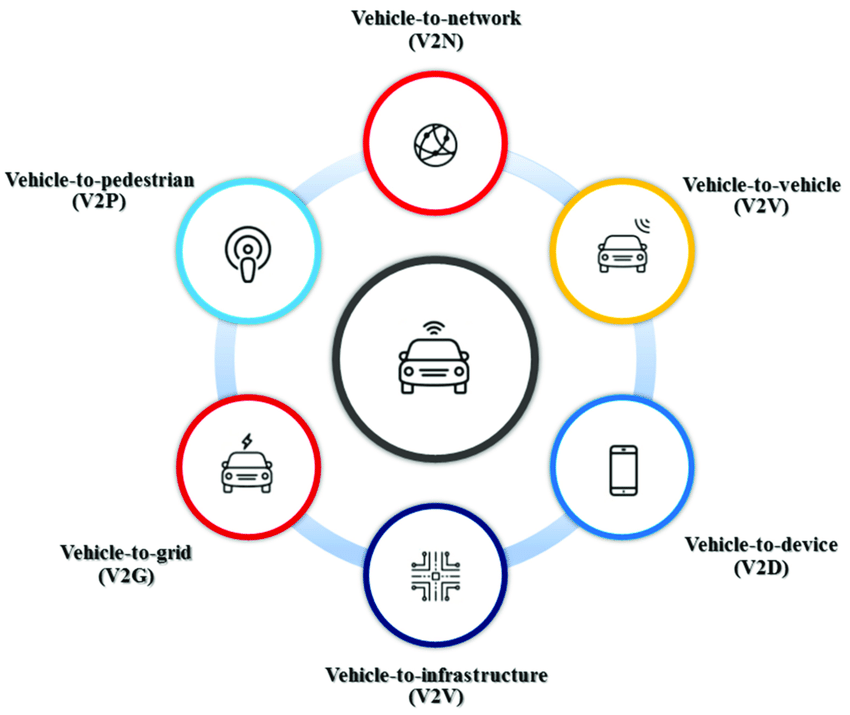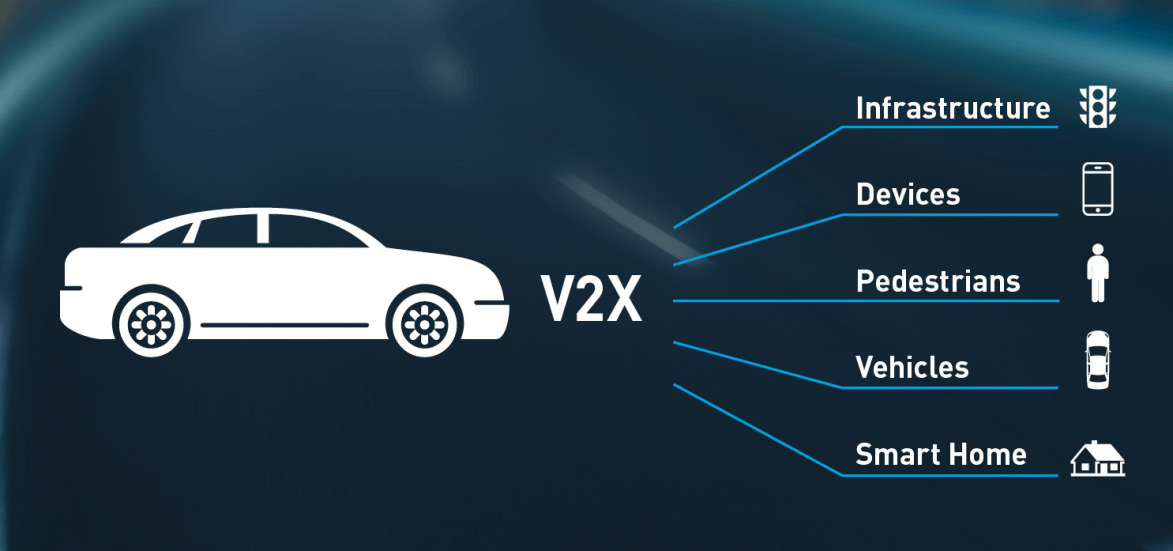Vehicle-to-Everything (V2X) Communication: Improving Safety and Efficiency on the Road
As technology continues to advance, vehicles are becoming increasingly connected, paving the way for innovative solutions to enhance safety and efficiency on the road. Vehicle-to-Everything (V2X) communication is a revolutionary technology that enables vehicles to communicate with each other and with surrounding infrastructure, offering numerous benefits for drivers, pedestrians, and the transportation system as a whole. Let's explore how V2X communication is transforming the future of transportation


What is V2X Communication?
V2X communication refers to the exchange of information between vehicles (V2V), vehicles and infrastructure (V2I), vehicles and pedestrians (V2P), and vehicles and networks (V2N). Using wireless communication technologies such as Dedicated Short-Range Communication (DSRC) and Cellular Vehicle-to-Everything (C-V2X), V2X-enabled vehicles can send and receive data in real-time, enabling them to anticipate potential hazards, optimize traffic flow, and improve overall safety and efficiency on the road.
Enhancing Safety
Collision Avoidance
V2X technology allows vehicles to detect and communicate with each other to prevent collisions and avoid potential hazards. Through real-time exchange of data about speed, position, and direction, vehicles can alert drivers to impending dangers, such as sudden stops or lane changes, and take proactive measures to avoid accidents.
Intersection Safety
By communicating with traffic signals and infrastructure at intersections, V2X-enabled vehicles can anticipate traffic light changes and potential conflicts with other vehicles or pedestrians. This enables smoother traffic flow, reduces the risk of intersection-related crashes, and enhances safety for all road users.
Pedestrian Safety
V2X communication extends beyond vehicles to include pedestrians and cyclists, allowing for improved awareness and interaction between all road users. Pedestrians equipped with V2X-enabled devices, such as smartphones or wearable technology, can communicate their presence and intentions to nearby vehicles, enhancing safety at crosswalks and intersections.
Optimizing Traffic Flow
Cooperative Adaptive Cruise Control (CACC)
V2X technology enables vehicles to cooperate with each other to maintain safe following distances and smooth traffic flow. Cooperative Adaptive Cruise Control (CACC) uses V2V communication to synchronize acceleration and braking between vehicles, reducing congestion, improving fuel efficiency, and minimizing the likelihood of traffic jams.
Traffic Management
By exchanging data with traffic management systems and infrastructure, V2X-enabled vehicles can receive real-time information about traffic conditions, road closures, and alternative routes. This allows drivers to make informed decisions and adjust their travel routes to avoid congestion and reduce travel time.
Emergency Vehicle Preemption
V2X communication enables emergency vehicles to preempt traffic signals and receive priority passage at intersections. By transmitting their location, speed, and direction to nearby vehicles and infrastructure, emergency responders can navigate through traffic more safely and efficiently, reducing response times and potentially saving lives.
Future Applications
Autonomous Vehicles
V2X communication is a critical component of autonomous vehicle technology, enabling self-driving cars to interact with other vehicles, pedestrians, and infrastructure in real-time. By sharing data and coordinating movements, autonomous vehicles can navigate complex traffic scenarios more effectively and safely, accelerating the transition to a future of fully autonomous transportation.
Smart Cities
V2X communication plays a central role in the development of smart city initiatives aimed at improving urban mobility and sustainability. By integrating V2X technology into transportation infrastructure, cities can optimize traffic flow, reduce congestion, and enhance safety for residents and visitors alike.
Environmental Benefits
By reducing traffic congestion, minimizing idling time, and optimizing fuel efficiency, V2X communication has the potential to reduce greenhouse gas emissions and mitigate the environmental impact of transportation. Through smarter, more efficient transportation systems, V2X technology contributes to a more sustainable and environmentally friendly future.


Vehicle-to-Everything (V2X) communication is revolutionizing the way we approach transportation, offering a multitude of benefits for safety, efficiency, and sustainability on the road. By enabling vehicles to communicate with each other, with infrastructure, and with other road users in real-time, V2X technology enhances collision avoidance, optimizes traffic flow, and lays the foundation for the future of autonomous and connected transportation. As V2X communication continues to evolve and proliferate, it holds the promise of safer, more efficient, and more sustainable mobility for all.












